
FIELD/LABORATORY RESEARCH
BIOGEOCHEMICAL MODELS
RISK ASSESSMENT
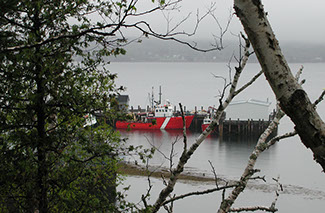
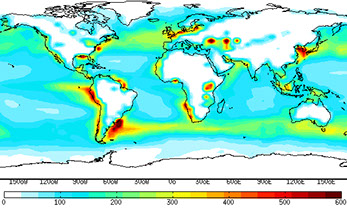
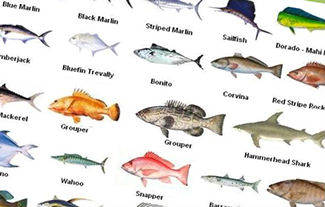
Our field and lab research focuses on understanding relationships between environmental properties (e.g., DOC, temperature, productivity) and chemical speciation/bioavailabilty of trace metals and organic compounds. We measure reaction rates and concentrations in environmental samples that can be used to parameterize and evaluate our modeling simulations. We use a variety of instruments in our lab including HPLC-MS/MS, ICP-MS, and MC-ICP-MS.
We use environmental models to investigate the broader spatial and temporal implications of relationships measured in the field and to synthesize multi-disciplinary research. Our models vary in complexity from statistical tools and relatively simple geochemical box models to global 3-D simulations of atmospheric and ocean circulation and ecology. We also model bioaccumulation of contaminants in aquatic food webs and collaborate with fisheries scientists to link our models to aquatic life.
Code for our models can be downloaded from the Sunderland Lab GitHub page
We use food-frequency questionnaires (FFQs) and probabilistic exposure simulations integrated with toxicokinetic (TK) models to estimate human exposures to contaminants. We also measure human biomarkers of exposure (hair, blood). We work closely with environmental epidemiologists looking at dose-response relationships to quantify present risks and link this information with environmental models to help anticipate public health impacts of climate change and regulations.
- Ongoing Research -
We are conducting diverse ongoing research projects that address the broad themes described briefly below or click for a
compilation of recent (2016-present) thematic publications:
PFAS Exposure | Mercury Biogeochemistry | Arctic/Subarctic | Marine Pollution | Risk Assessment

| PFAS Exposure |
Per- and polyfluoroalkyl substances (PFAS) are highly fluorinated anthropogenic chemicals that are widely used by industry and in diverse consumer products. Exposure to PFAS has been associated with many adverse impacts on human health including immunotoxicity, metabolic disruption, endocrine effects, and certain cancers. Major exposure pathways to PFAS include drinking water, seafood, consumer products, and diet.
STEEP: Sources, Transport, Exposure and Effects of PFAS
We are part of a National Institute of Environmental Health Sciences (NIEHS) Superfund Research Center led by the University of Rhode Island on PFAS that was first funded in 2017. Our funding for Phase II of STEEP (STEEP II) was renewed in 2022.
Our research team leads Project 1 of this Center and a description of research objectives can be found here.
A description of some of our past STEEP research can be found here.
Collaborators:
Rainer Lohmann, Graduate School of Oceanography, University of Rhode Island
Angela Slitt, College of Pharmacy, University of Rhode Island
Philippe Grandjean, University of Southern Denmark
- back to top -
Methylmercury is a potent neurotoxicant and exposures have also been linked to adverse impacts on cardiovascular health. Human activities such as mining and fossil fuel combustion have greatly enriched environmental concentrations of methylmercury and this is being exacerbated in some regions by anthropogenic climate changes.
Impacts of Global Change on Terrestrial Mercury in the Arctic
In 2022, we started a new NSF-funded project on modeling the impacts of permafrost melt on Arctic and global mercury budgets. As part of this project, we will be enhancing global mercury modeling tools including a 7-box biogeochemical modeling framework, the Global Terrestrial Mercury Model, and sibCASA.
We recently completed a project with the Energy Foundation on the public health benefits of regulating mercury from U.S. coal-fired utilities.
We are also working with Chris Golden on characterizing the role of the human microbiome on methylmercury exposures in two Madagasgar cohorts with pilot funding from the Harvard NIEHS Center.
Collaborators:
NSF-permafrost project: Kevin Schaefer (CU Boulder)
Coal-fired power plant risks: Charley Driscoll (Syracuse)
Human microbiome: Chris Golden and Curtis Huttenhower (HSPH)
- back to top -
| Arctic/Subarctic |
Global change is disproportionately affecting Arctic and Subarctic communities despite their limited contribution to these global environmental challenges. We are investigating how global pollutants have impacted public health in the Faroe Islands as a case study for evaluating the undervalued role of culture in environmental decision-making and for refining the concept of a "cultural-tipping point" associated with environmental pollution. This work is funded by NSF as part of their Dynamics of Coupled Socio-Environmental Systems (DISES) and Navigating the New Arctic (NNA) initiatives.
Collaborators:
Russell Fielding (Coastal Carolina U.)
Yoshi Ota (UW & Ocean Nexus/Nippon Foundation)
Faroe Islands: Bjarni Mikkelsen, Pal Weihe, Maria Skaalum Petersen
- back to top -


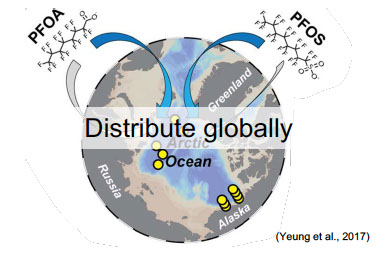

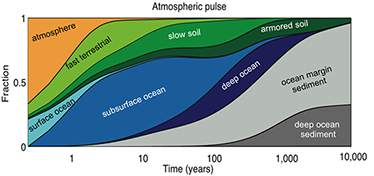
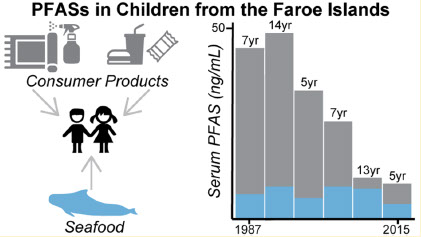
| Marine Pollution |
The ocean is the terminal sink for many anthropogenic pollutants. Some pollutants biomagnify in food webs and pose risks to ecosystem health and fish consumers.
We are broadly interested in understanding the effects of climate-driven changes in the ocean on the distribution of human pollutants in the physical environment and food-web dynamics. In addition to studying the PFAS and mercury in marine ecosystems (see above), we are studying the large-scale behavior of neutral persistent organic pollutants (POPs) like polychlorinated biphenyls (PCBs), that provide useful benchmarks of POP behavior. We have focused our efforts on developing global 3-D models of oceanic and atmospheric cycling and studies of food web accumulation and are using these tools in the DISES project described above.
- back to top -
| Risk Assessment |
We are part of the Harvard-led Superfund Research Center on Metals, Metal Mixtures, Cognitive Aging, Remediation, and Exposure Sources (MEMCARE)
We lead Project 3 on modeling national scale distributions of heavy metals in U.S. drinking water. We are also working with a national cohort of U.S. women (Nurses Health Study) to link drinking water concentrations of toxicants to human exposures in collaboration with Francine Laden (HSPH).
We are also part of a CDC/ATSDR project with Laurel Schaider and Tamarra James-Todd examining health risks to communities in Massachusetts from PFAS contaminated drinking water.
We are also collaborating with former postdoc Asif Qureshi (Associate Professor at IIT Hyderbaad) on health risks associated with heavy-metal exposures from rapid expansion of coal-fired power plants in South India.
- back to top -

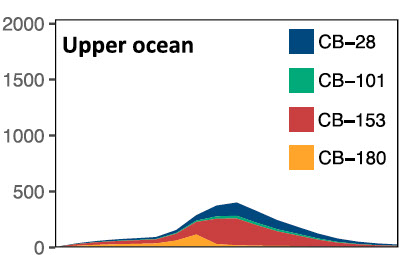

Sunderland Lab

Group Administrator: Robert Stanhope
Address: 29 Oxford Street, Cambridge MA 02138
E-mail: stanhope [at] seas.harvard.edu